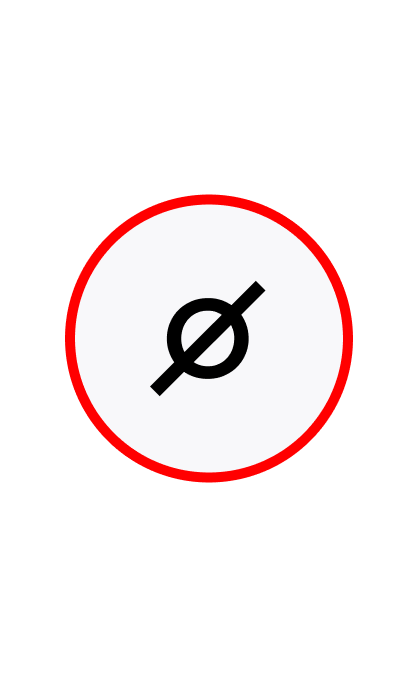

This website stores cookies on your computer. These cookies are used to collect information about how you interact with our website and allow us to remember you. We use this information in order to improve and customize your browsing experience and for analytics and metrics about our visitors both on this website and other media. To find out more about the cookies we use, check our Privacy Policy
Agree & Close


We believe, we are striding into the next phase of human evolution where technology negates the human miseries and we humans can work towards sustaining humanity. We constantly focus on innovations to make this future closer to us.
Explore this whitepaper on Generative AI in Banking and Financial Services. Discover its potential to transform business and improve billions of lives.
In this whitepaper, we will explore generative AI and identify business growth opportunities it offers. We aim to provide business owners with a comprehensive guide to using AI to unlock new opportunities and achieve sustainable growth. We will explore how generative AI can be used to analyze data and identify patterns, as well as how it can be used to generate new ideas and solutions.
This Whitepaper explores Web3, a decentralized web built on blockchain technology, and its potential benefits for businesses. The benefits of transparency, security, user control, and tokenization are highlighted in the paper. To better understand the technology, it refers to Web2 and Web2.5 as predecessors to Web3. Security, privacy, and regulatory concerns are all acknowledged risks. The paper also emphasizes Web3's potential to transform industries and encourages businesses to stay ahead of the curve and embrace the Internet's future.
This whitepaper will explore the essentials for launching a successful blockchain product. In the first section, we’ll explore how to choose the right blockchain for developing your DApp. In the second section, we’ll explore the essentials for DApp development, including the best practices, methodologies, common vulnerabilities, audit process, and tools. In the final section, we’ll explore the fundamentals of token economy design for your blockchain project.
Here's a step-by-step checklist to get your e-Learning project off the ground. This guide includes technical functionalities, a feature list, and more viable information for your project.
Do you intend to create an NFT marketplace? Do you want to learn how to build an NFT marketplace platform from the ground up? Here's a handy checklist to get you started. This document contains technical specifications, a feature list, and other useful information for your NFT project.
Cosmos, the Internet of Blockchains, is an interoperable, customizable, eco-friendly blockchain. Still on the fence about it? Let us help you determine the importance of Cosmos across your project requirement.

Consult our blockchain experts to learn more how Cosmos blockchain can you with your project requirements.
Learn MoreCosmos blockchain is a network of independent blockchains called zones connected to the main Cosmos Hub by its Inter-Blockchain Communications (IBC) Protocol. Each zone’s transactions, validators, and token creation are independent of each other, yet the zones and the Hub are seamlessly connected, providing strong security through the Proof of Stake consensus mechanism.

Cosmos blockchain is a decentralised network of separate parallel blockchains that use BFT consensus algorithms like Tendermint. Examine the major components of cosmos blockchain given below.

Unlike Proof-of-work, Tendermint Consensus Algorithm provides various guarantees such as finality on every transaction, block production algorithm, and synchrony assumptions.

Blocks in Tendermint cannot be reversed or reverted once there have been 2 or 3 signatures from the validator.

A synchronous network is known to give better message delivery time. Since Tendermint operates under a partial synchrony assumption, the progress of the chain is the real network speed.


Using the Cosmos SDK, developers can easily build and deploy blockchains without losing their main focus of writing their application logic. It is developers to bring ease to the process.

The Interoperability achieved through the Cosmos Inter-Blockchain Communication (IBC) Protocol is straightforward.

The Cosmos Hub keeps a record of the total number of tokens in each zone facilitating seamless exchanges. As the communication between the zones increase the Cosmos Hub becomes more useful.
Cosmos blockchain aims to make it easy for developers to build blockchain applications and to break down barriers between blockchains by allowing them to trade with one another.

Cosmos allows the addition of new networks to the main Hub to create a connected web of Blockchain that can strengthen the overall network through its interconnectivity.

First, Application, for transactions throughout the network. Second, Networking, for the interconnected zone. Then, the Consensus Mechanism, a Proof of Stake mechanism to validate transactions

Cosmos’s unique BFT engine functionality allows to multiple the network by adding new zones that don't have to be coded from scratch.

Cosmos calls for a Proof of Stake protocol by asking the users to pledge ATOM, the native coin, to be a validator. And each proposed change requires a vote from all validators.

The proof of stake consensus mechanism makes the blockchain 99% lower on the carbon footprint.

It takes Cosmos 7 seconds to confirm a transaction. The transaction rate of 10000 TPS makes it extremely fast.
We have curated few parameters for you to match with your Blockchain project development, See if Cosmos is the right choice for your project.
Public
Private
Consortium
Anonymous
Speed
Avg Gas fee
Interoperable
Native token support
Yes/No
Yes/No
No
No
10,000 TPS
0.01000$
Yes
Yes
Discover the essentials for blockchain DApp development, best practices, auditing, tokenomics model, and more.
Blockchains can utilise Cosmos to preserve sovereignty, process transactions rapidly, and connect with other blockchains in the ecosystem, making it ideal for a wide range of use cases.

Cosmos’ governance mechanism uses a proof-of-stake consensus mechanism, Tendermint BFT, where users can “stake” their ATOM tokens to validate transactions and earn rewards.

To monitor the ecosystem and state of each zone Cosmos has designed Cosmos Hub to function as a main ledger using the Inter-Blockchain Communication Protocol (IBC). Cosmos is scalable and can process multiple transactions in one second.

By using a Tendermint BFT Proof-Of-Stake consensus algorithm holders can lock in or “stake” their ATOM tokens to become validators.

Cosmos set up new interoperable blockchain applications with a combination of Tendermint, CosmosSDK, and IBC that can host a wide variety of blockchain projects from cloud services, and marketplaces to DeFi providers.

Cosmos has grown over the few years since its launch. Its plans to expand into a major player in the industry can be helped by its connections to major cryptocurrencies, like Bitcoin and Ethereum.

The Cosmos free SDK allows developers to build sovereign blockchain apps without ongoing costs. This boosts its applications in DeFi, NFTs, DAOs, social networks, and marketplaces.